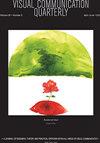Bathtub Madonnas as Media in an Italian American Neighborhood in Transition: Migration, Gentrification, and Meaningful Properties
IF 0.5
Q4 COMMUNICATION
引用次数: 0
Abstract
Based on historical research, visual analysis, photographic documentation, and 31 interviews, this article examines Madonna yard shrines constructed by Italian Americans in the 20th century as vernacular media and considers their role in knowledge production, identity representation, and the transmission of history. It discusses the historic meanings and contexts of these shrines, including their emergence during a time of anti-Italian bigotry, while examining their evolving significance within the changing cultural and socioeconomic contexts of globalization. While previous research on religious yard statuary has analyzed them as expressions of faith and cultural identity within homogeneous communities, this article explores their meanings in a neighborhood that is rapidly changing due to new migration, gentrification, and transformations in the urban real estate market.浴缸麦当娜在过渡中的意大利裔美国社区中的媒介:移民、中产阶级化和有意义的属性
基于历史研究、视觉分析、摄影文献和31次访谈,本文考察了意大利裔美国人在20世纪作为本土媒体建造的圣母庭院神殿,并考虑了它们在知识生产、身份表现和历史传播方面的作用。它讨论了这些神社的历史意义和背景,包括它们在反意大利偏执时期的出现,同时研究了它们在全球化不断变化的文化和社会经济背景下不断发展的意义。虽然之前对宗教庭院雕像的研究分析了它们作为同质社区中信仰和文化认同的表达,但本文探讨了它们在一个由于新移民、中产阶级化和城市房地产市场转型而迅速变化的社区中的意义。
本文章由计算机程序翻译,如有差异,请以英文原文为准。
求助全文
约1分钟内获得全文
求助全文

 求助内容:
求助内容: 应助结果提醒方式:
应助结果提醒方式:


